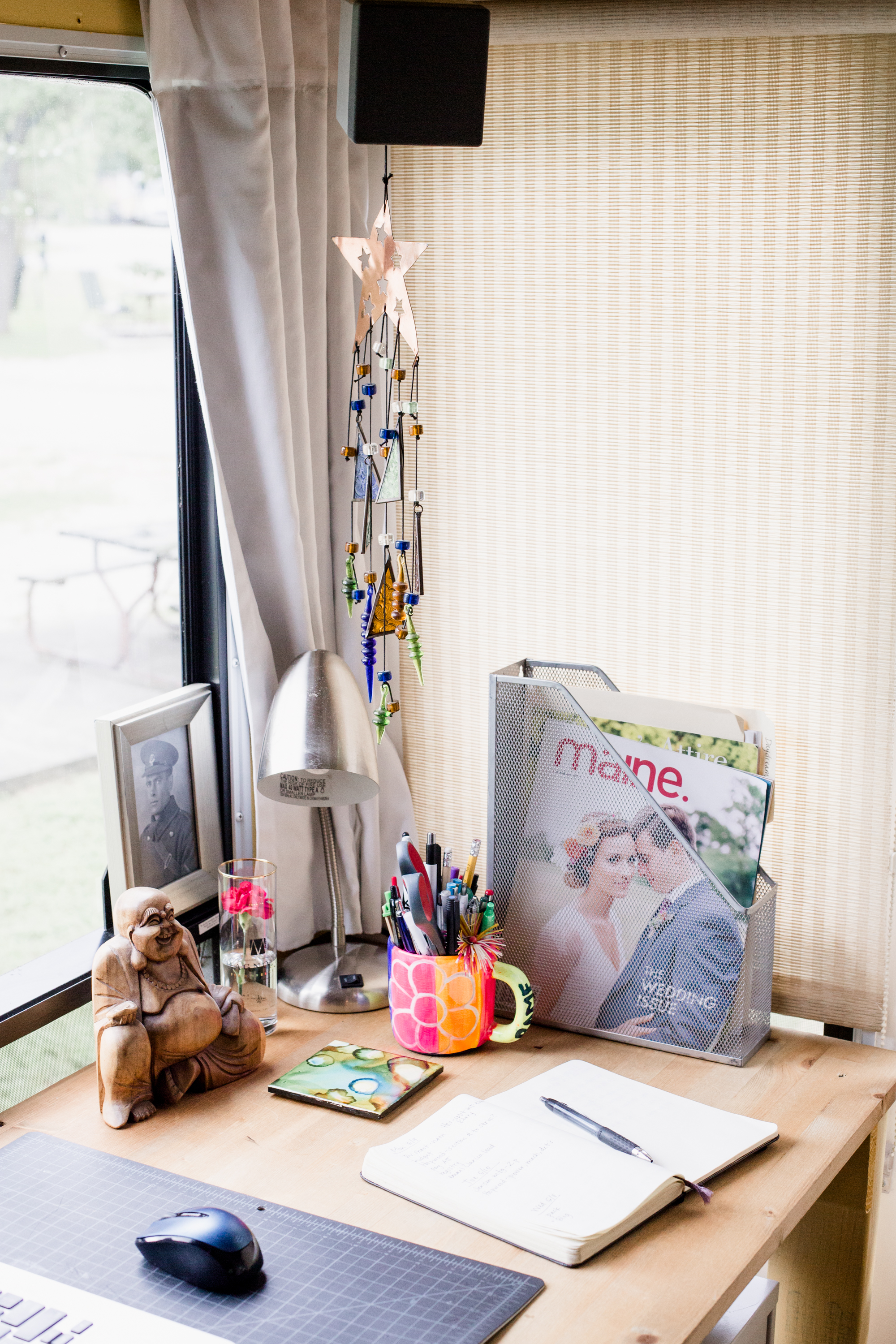DIY Design: Passive Ways to Save Energy
7 ways to lower your energy bill.
In green building, there’s this thing called “Passive” Design. It sounds unexciting but it’s one of the most powerful tools at a homeowner’s disposal. You rarely hear about it because very few people make money with Passive Design, except the homeowner!
The Australians , who are ace at the sustainability game, define it like this:
Passive Design takes advantage of the climate to maintain a comfortable temperature range…which accounts for about 40% (or much more in some climates) of energy use in the average home.
FORTY PERCENT OF ENERGY! Good Passive Design has the power to significantly lower or even eliminate your heating and cooling bills. It gets rid of sunlight glare which allows your eyes (and brain) relax. Most importantly, a passively designed new home or home remodel is comfortable. I mean really comfortable. The temperature remains relatively even throughout the day. It encourages breezes in the summer and traps heat in the winter. The concepts are simple and (usually) inexpensive to implement.
As if that wasn’t enough, it reduces the home’s carbon footprint. Less mechanical equipment to be manufactured and carted to the site, less energy used to heat and cool the building. It’s a win-win.
The crazy thing is, these concepts are SIMPLE! Passive Design was my favorite class at university. My Mind. Was. Blown.
The easiest time to apply Passive Design is in the schematic design of a new house. In the verrry beginning. But there are also things small moves you can do in an apartment or small house renovation.
The Basics
1. Climate
What’s the average temperature in Summer and Winter? Is it dry or humid? This defines how heavily you’ll weigh the following:
2. Orientation
In general, turn the house’s backside to the sun. On the south side*, the windows should be smaller and overhangs should be deeper. You want to avoid all-day direct light. It’s ok to get a little light in the mornings or evenings, like on the east and west walls, but all day is usually too much.
This should be balanced with prevailing winds. If wind could be a benefit in the summer, program the house to take advantage. Put windows and doors in the wind’s path. Then put your daytime rooms (kitchen, living room, office) in-between. That windy office will feel blissful on a hot summer day.
3. Air Movement
Speaking of wind, let’s control that shiz! Once you’re oriented the right way, time to cut some strategic openings. These could be door ways, windows, or walls meant to direct air around your house.
But there’s more! Hot air floats on cold air. We can use that! Put in operable high windows or skylights. Open them in the summer to pull cold air in at the bottom and push hot air out at the top.
You can also encourage air flow with some affordable ceiling fans. The human body always likes a bit of air movement.
4. Shading & Daylighting
Shading can mean SO many things. It could be curtains inside the house, a patio cover outside, a roof overhang, or even a nearby tree. Like I said in #2, we want to avoid direct sunlight on hot days. Each method has it’s advantages.
Curtains & shades are flexible and can be moved in seconds. A deciduous tree sheds it’s leaves in winter when you need that direct light. Roof overhangs and patio covers can be sized based on the sun. This is a little more complicated, get an architect to help with “built-in” shading. Note: the shading industry is one of the few to profit from Passive Design.
Daylight can also be harnessed so you rarely have to turn on lights during the day! A skylight on the North facing* roof gives a pleasant glow. And a window into a light well feels like heaven. And insanely enough, if you put a shelf at the right height, in front of the window, it will reflect light into the room for perfect distribution.
5. Thermal Mass
Thermal mass is the sister of Air Movement. It’s mostly used for cold winter weather. It usually means a concrete or stone floor or wall. This is the one time you want direct sunlight. Design your shading so it lets in the low winter sun. Then put a piece of thermal mass right where that sun will shine. (Get your mind out of the gutter! I said where the sun WILL shine!)
The sun heats up the concrete during the day, and the concrete slowly releases it throughout the night. Concrete and stone are incredible tools for keeping heat.
6. Insulation & Sealing
Why do all this work just to have the temperate air seeps out through the walls? It’s VERY hard to over insulate a house. Pack that stuff everywhere. The goal is a continuous insulation envelope all the way around the house. We want to seal like an envelope! If you sliced the house in half, there should never be a gap in insulation between inside and outside. (Sidenote: always install an insulation baffle!)
Then make sure you insulate (and waterproof) any penetrations in the wall. Again, continuous envelope.
7. Glass
Get well insulated glass. Glass is the biggest thermal weakness in a building envelope. It let’s out hot air like Donald Trump. (Whoops! Did I say that?)
Shading means nothing if you have a single-pane window. Buy energy efficient windows and skylights. You won’t regret it.
Easy Steps for Existing Homes
· Fans (freestanding or ceiling) near windows or doors encourage air flow.
· Curtains or Shades keep out direct southern sun*.
· Outdoor patio covers or umbrellas can also block direct light.
· Plant a deciduous tree on the south side* of the house to block summer sun and let in winter sun.
· Operable Skylights can give daylight AND get rid of hot air.
· Consider new insulation in your walls (if they’re built with wood). It can make a world of difference, especially in old homes.
*If you’re in the Southern hemisphere you want to keep out Northern sun.
Want to learn more? Ever heard of “Pretty Good House”?
It’s a no nonsense, relatively affordable way to build a sustainable house and it’s SUPER effective. I wrote about it here.
And finally. Here's the Meldrum Design social media summary, just for Aunty Carole :)
Even in a tiny home, there's always room for knick-knacks! I love arranging nostalgic or inspirational pockets of stuff. 👍 This is the pocket-o-stuff on my desk. 🌏 Got the wood Buddha in Thailand. Painted the neon mug in Mexico. Sun catcher was a gift from Scotland from my momma. Framed photo is my grandpa who always wanted to be an architect. Coaster was painted by a close friend and fellow designer. #roomformemories #tinyhouse #tinyhome #rvlife #rvrenovation #interiordesign #minimalist #minimalistinteriordesign @greytobluephotography
Feel so lucky to have these kinds of projects. 😍 Sara was my yoga teacher and friend before she became a client. Turns out the whole family is awesome! 💁🏼We collaborated on a beautiful and efficient interior remodel of their home. 🏡 It's currently under construction and they sent this thoughtful note on personalized paper! #gratitudefeelsgood #idealclient #interiorremodel #interiordesign #smallbusiness
When we moved in, there were cabinets across the top of of this wall. It made the bedroom feel tiny! 😣 So we ripped them out, repainted the wall, and installed full-height curtains. 👍 Store bought shelving completes the look. And I had space for a photo wall! 😃 The new space is full of light. And it feels huge! 🏠 #livingbiginatinyhouse #rvlife #womeninarchitecture #tinyrealestate #tinyremodel #rvrenovation #tinyhome #tinyliving
Special thanks to Australia for their prolific number of Passive Design websites, and to Autodesk Sustainability Workshop for the easy-to-understand images. Here are my excellent sources of information:
http://www.yourhome.gov.au/passive-design
http://sustainabilityworkshop.autodesk.com/buildings/apertures-cooling
http://sustainabilityworkshop.autodesk.com/buildings/lighting-and-daylighting-design
http://www.solarchoice.net.au/blog/solar-trackers/
http://www.blueplanetbiomes.org/climate.htm
http://sustainabilityworkshop.autodesk.com/buildings/thermal-mass
http://gruenecodesign.com.au/why-is-insulation-so-important/
http://www.doncasterupvcwindows.co.uk/blog/energy-efficient-upvc-windows/
http://mjquirk.com/bburg.html













